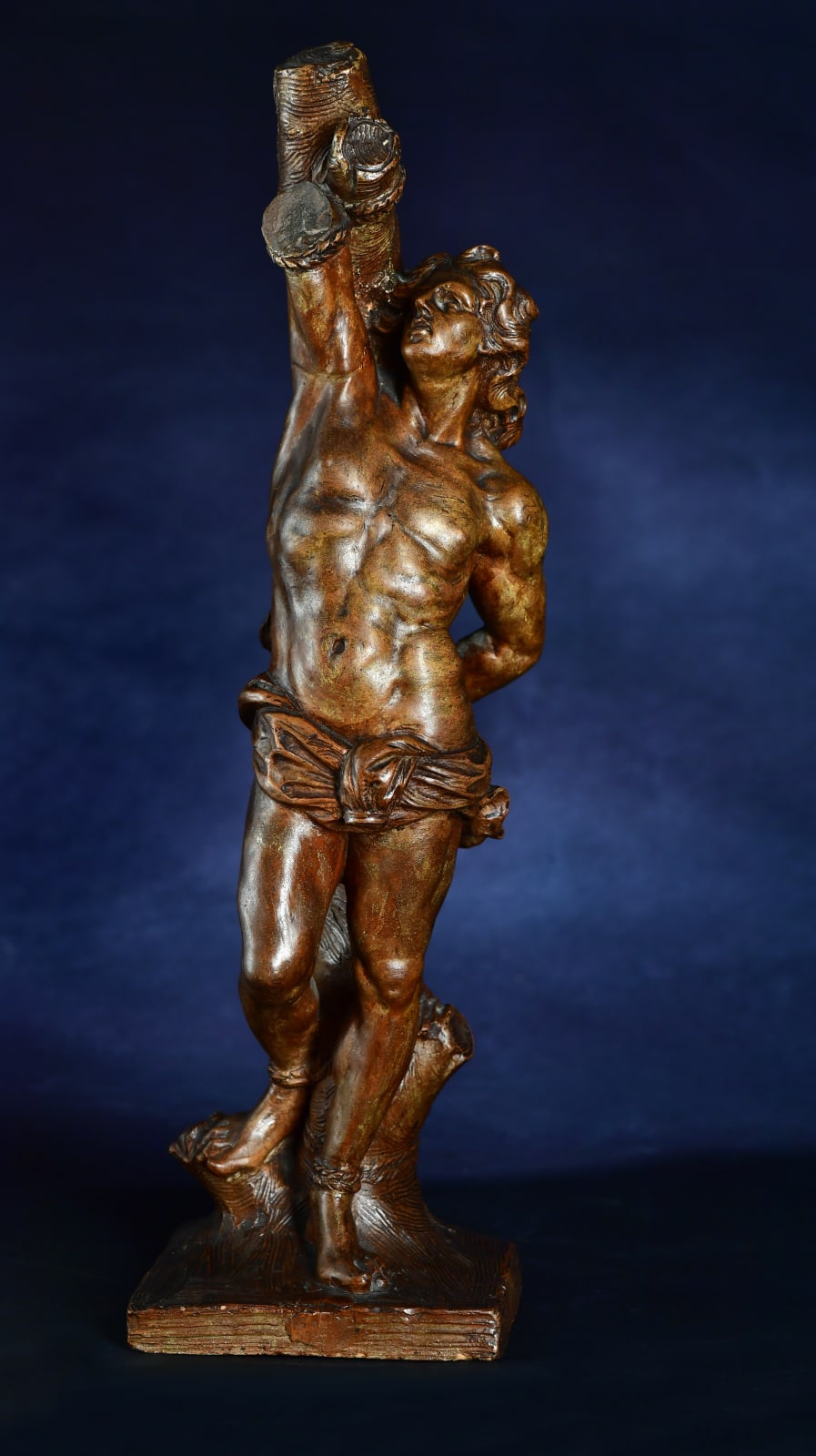Mattheus van Beveren (ca. Antwerp 1630 - 1696 Brussels)
Saint Sebastian was one of the most popular saints from the Middle Ages through the Baroque. Protector against the plague and epidemics in general, he was also – having been a centurion in the Roman army – patron saint of soldiers, and of archers in particular. For these reasons there are a great many artworks – especially sculptures – depicting the saint. Usually, he is shown tied to a tree, pierced with the arrows shot at him by his tormentors. (The legend says that after angels carefully removed the arrows, he made a miraculous recovery.) In the present work, the image of the saint is not necessarily that of the suffering martyr; instead, it takes the form of an Athleta Christi or Champion of Christ: well-built and muscular, the saint is heroically overcoming his suffering, turning his head towards the skies, awaiting salvation. The iconography is reminiscent of that of Rubens’ Saint Sebastian (ca. 1614), now in the Gemäldegalerie, Berlin.
Although the work is not signed, the attribution to the Antwerp sculptor Mattheus van Beveren has been made based on stylistic comparisons with other, known works by the artist. The treatment of the hair, face and musculature can be compared very favourably to that seen in his large-scale works or in some of his smaller works in terracotta and ivory. Van Beveren was taught by Pieter I Verbruggen and became a master of the guild of St Luke in 1649/50. He worked in Antwerp, Ghent, Brussels as well as further afield, sometimes in collaboration with contemporaries such as Artus I and II Quellinus. He carved decorations for confessionals, epitaphs and funerary monuments as well as pulpits. Van Beveren is also known to have produced a number of small-scale works in ivory. There are several similarities between the present work and Artus II Quellinus’ famous Saint Sebastian (1661), now in the KMSKA, Antwerp, but our work clearly displays more tension in the body, expression in the face and dynamism in the composition as a whole. Interestingly, when the present work was in the Lambert collection in the early twentieth century, it bore an attribution to Lucas Faydherbe, an artist who had a major influence on van Beveren. There can be no doubt that it was intended as a modello for a – now lost – work, which surely must be counted as one of the most important representations of St Sebastian of the period, combining the refined elegance of Artus II Quellinus with the robustness of Faydherbe in a delightful synthesis.
Provenance
With Van Herck, Antwerp, 1976;
Private collection, Antwerp.
